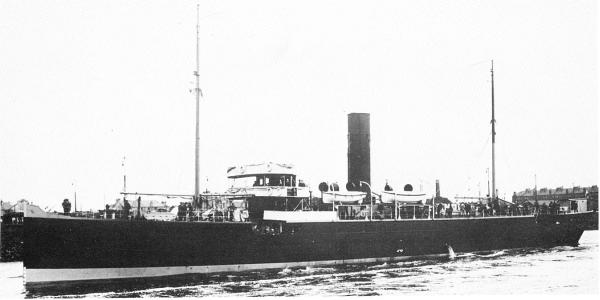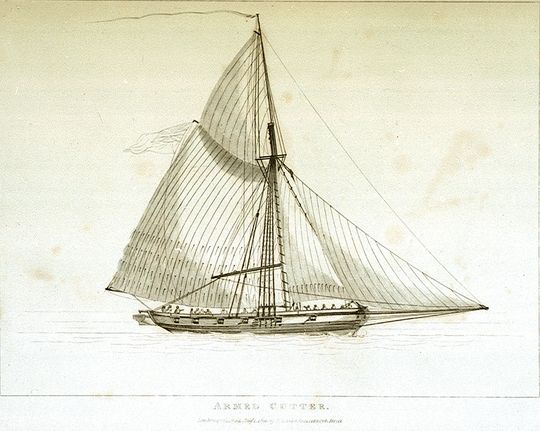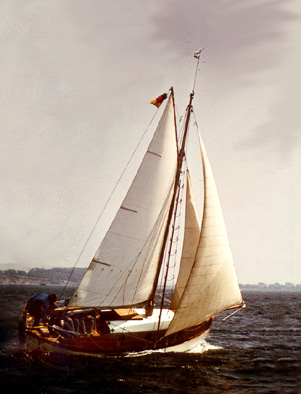|
HMS Industry (1814)
Several ships of the Royal Navy have been named HMS ''Industry''. * , a sloop in service in 1765 * , purchased in 1794 as a fireship, but broken up in 1795 * , an launched in 1814, fitted in 1824 to carry shells and ammunition; in 1835 fitted as a chapel ship for the Isle of Man; broken up 1846 * , an iron screw storeship launched and purchased in 1854, became a boom defence ship (BDS) in 1901, and was sold in 1911 * (''Glasgow'' renamed 1900), launched 1901, Royal Fleet Auxiliary (RFA)-manned from 1914; as Q-ship Q-ships, also known as Q-boats, decoy vessels, special service ships, or mystery ships, were heavily armed merchant ships with concealed weaponry, designed to lure submarines into making surface attacks. This gave Q-ships the chance to open f ... used the names ''Tay'' and ''Tyne''; torpedoed 1918 but reached harbour; sold 1924 for breaking up Hired vessels * HM Irish gun vessel ''Industry'', 78 tons ( bm) and six guns, served under contract 1803 to 1809, or 1 ... [...More Info...] [...Related Items...] OR: [Wikipedia] [Google] [Baidu] |
Royal Navy
The Royal Navy (RN) is the United Kingdom's naval warfare force. Although warships were used by Kingdom of England, English and Kingdom of Scotland, Scottish kings from the early medieval period, the first major maritime engagements were fought in the Hundred Years' War against Kingdom of France, France. The modern Royal Navy traces its origins to the early 16th century; the oldest of the British Armed Forces, UK's armed services, it is consequently known as the Senior Service. From the middle decades of the 17th century, and through the 18th century, the Royal Navy vied with the Dutch Navy and later with the French Navy for maritime supremacy. From the mid 18th century, it was the world's most powerful navy until the World War II, Second World War. The Royal Navy played a key part in establishing and defending the British Empire, and four Imperial fortress colonies and a string of imperial bases and coaling stations secured the Royal Navy's ability to assert naval superiority ... [...More Info...] [...Related Items...] OR: [Wikipedia] [Google] [Baidu] |
Sloop-of-war
In the 18th century and most of the 19th, a sloop-of-war in the Royal Navy was a warship with a single gun deck that carried up to eighteen guns. The rating system covered all vessels with 20 guns and above; thus, the term ''sloop-of-war'' encompassed all the unrated combat vessels, including the very small gun-brigs and cutters. In technical terms, even the more specialised bomb vessels and fireships were classed as sloops-of-war, and in practice these were employed in the sloop role when not carrying out their specialised functions. In World War I and World War II, the Royal Navy reused the term "sloop" for specialised convoy-defence vessels, including the of World War I and the highly successful of World War II, with anti-aircraft and anti-submarine capability. They performed similar duties to the American destroyer escort class ships, and also performed similar duties to the smaller corvettes of the Royal Navy. Rigging A sloop-of-war was quite different from a civilia ... [...More Info...] [...Related Items...] OR: [Wikipedia] [Google] [Baidu] |
Fireship
A fire ship or fireship, used in the days of wooden rowed or sailing ships, was a ship filled with combustibles, or gunpowder deliberately set on fire and steered (or, when possible, allowed to drift) into an enemy fleet, in order to destroy ships, or to create panic and make the enemy break formation. Ships used as fire ships were either warships whose munitions were fully spent in battle, surplus ones which were old and worn out, or inexpensive purpose-built vessels rigged to be set afire, steered toward targets, and abandoned quickly by the crew. Explosion ships or "hellburners" were a variation on the fire ship, intended to cause damage by blowing up in proximity to enemy ships. Fireships were used to great effect by the outgunned English fleet against the Spanish Armada during the Battle of Gravelines, [...More Info...] [...Related Items...] OR: [Wikipedia] [Google] [Baidu] |
Isle Of Man
) , anthem = " O Land of Our Birth" , image = Isle of Man by Sentinel-2.jpg , image_map = Europe-Isle_of_Man.svg , mapsize = , map_alt = Location of the Isle of Man in Europe , map_caption = Location of the Isle of Man (green) in Europe (dark grey) , subdivision_type = Sovereign state , subdivision_name = United Kingdom , established_title = Norse control , established_date = 9th century , established_title2 = Scottish control , established_date2 = 2 July 1266 , established_title3 = English control , established_date3 = 1399 , established_title4 = Revested into British Crown , established_date4 = 10 May 1765 , official_languages = , capital = Douglas , coordinates = , demonym = Manx; Manxman (plural, Manxmen); Manxwoman (plural, Manxwomen) , ethnic_groups = , ethnic_groups_year = 2021 , ethnic_groups_ref = Official census statistics provided by Statistics Isle of Man, Isle of Man Government: * * , religion = , religion_year = 2021 , religi ... [...More Info...] [...Related Items...] OR: [Wikipedia] [Google] [Baidu] |
Net Laying Ship
A net laying ship, also known as a net layer, net tender, gate ship or boom defence vessel was a type of naval auxiliary ship. A net layer's primary function was to lay and maintain steel anti-torpedo or anti-submarine nets. Nets could be laid around an individual ship at anchor, or around harbors or other anchorages. Net laying was potentially dangerous work, and net laying seamen were experts at dealing with blocks, tackles, knots and splicing. As World War II progressed, net layers were pressed into a variety of additional roles including salvage, troop and cargo transport, buoy maintenance, and service as tugboats. US Navy 1930s War Plan Orange, the pre-WW2 US plan for war with Japan, anticipated that Pearl Harbor would be too small for the US Navy fleet that would be amassed in Hawaii. Orange anticipated the construction of a large anchorage in Lahaina Roads between the islands of Maui, Lānaʻi, and Molokaʻi. Construction would consist of massive nets and minefields t ... [...More Info...] [...Related Items...] OR: [Wikipedia] [Google] [Baidu] |
Royal Fleet Auxiliary
The Royal Fleet Auxiliary (RFA) is a naval auxiliary fleet owned by the UK's Ministry of Defence. It provides logistical and operational support to the Royal Navy and Royal Marines. The RFA ensures the Royal Navy is supplied and supported by providing fuel and stores through replenishment at sea, transporting Royal Marines and British Army personnel, providing medical care and transporting equipment and essentials around the world. In addition the RFA acts independently providing humanitarian aid, counter piracy and counter narcotic patrols together with assisting the Royal Navy in preventing conflict and securing international trade. They are a uniformed civilian branch of the Royal Navy staffed by British merchant sailors. RFA personnel are civilian employees of the Ministry of Defence and members of the Royal Naval Reserve and Sponsored Reserves. Although RFA personnel wear Merchant Navy rank insignia with naval uniforms, they are part of the Royal Navy. RFA vessels a ... [...More Info...] [...Related Items...] OR: [Wikipedia] [Google] [Baidu] |
Q-ship
Q-ships, also known as Q-boats, decoy vessels, special service ships, or mystery ships, were heavily armed merchant ships with concealed weaponry, designed to lure submarines into making surface attacks. This gave Q-ships the chance to open fire and sink them. The use of Q-ships contributed to the abandonment of cruiser rules restricting attacks on unarmed merchant ships and to the shift to unrestricted submarine warfare in the 20th century. They were used by the British Royal Navy and the German ''Kaiserliche Marine'' during the First World War and by the Royal Navy, the ''Kriegsmarine'', and the United States Navy during the Second World War (1939–45). Etymology Short for Queenstown in Ireland, as Haulbowline Dockyard in Cork Harbour was responsible for the conversion of many mercantile steamers to armed decoy ships in World War One, although the majority appear to have been converted in larger navy yards such as Devonport. Early uses of the concept In the 1670s, wa ... [...More Info...] [...Related Items...] OR: [Wikipedia] [Google] [Baidu] |
Hired Irish Gun Vessel Industry
Henry Jamison "Jam" Handy (March 6, 1886 – November 13, 1983) was an American Olympic breaststroke swimmer, water polo player, and founder of the Jam Handy Organization (JHO), a producer of commercially sponsored motion pictures, slidefilms (later known as filmstrips), trade shows, industrial theater and multimedia training aids. Credited as the first person to imagine distance learning, Handy made his first film in 1910 and presided over a company that produced an estimated 7,000 motion pictures and perhaps as many as 100,000 slidefilms before it was dissolved in 1983. Athletic activities As a swimmer, Handy introduced a number of new swimming strokes to Americans, such as the Australian crawl. He would often wake up early and devise new strokes to give him an edge over other swimmers. Swimming led to him getting a bronze in the 1904 Olympics at St. Louis, Missouri. Twenty years later he was part of the Illinois Athletic Club water polo team at the 1924 Olympics in Paris, Fr ... [...More Info...] [...Related Items...] OR: [Wikipedia] [Google] [Baidu] |
Builder's Old Measurement
Builder's Old Measurement (BOM, bm, OM, and o.m.) is the method used in England from approximately 1650 to 1849 for calculating the cargo capacity of a ship. It is a volumetric measurement of cubic capacity. It estimated the tonnage of a ship based on length and maximum beam. It is expressed in "tons burden" ( en-em , burthen , enm , byrthen ), and abbreviated "tons bm". The formula is: : \text = \frac where: * ''Length'' is the length, in feet, from the stem to the sternpost; * '' Beam'' is the maximum beam, in feet. The Builder's Old Measurement formula remained in effect until the advent of steam propulsion. Steamships required a different method of estimating tonnage, because the ratio of length to beam was larger and a significant volume of internal space was used for boilers and machinery. In 1849, the Moorsom System was created in the United Kingdom. The Moorsom system calculates the cargo-carrying capacity in cubic feet, another method of volumetric measurem ... [...More Info...] [...Related Items...] OR: [Wikipedia] [Google] [Baidu] |
Hired Armed Vessels
During the eighteenth and nineteenth centuries the Royal Navy made use of a considerable number of hired armed vessels. These were generally smaller vessels, often cutters and luggers, that the Navy used for duties ranging from carrying and passengers to convoy escort, particularly in British coastal waters, and reconnaissance.Winfield (2008), p.387. Doctrine The Navy Board usually hired the vessel complete with master and crew rather than bareboat. Contracts were for a specified time or on an open-ended monthly hire basis. During periods of peace, such as the period between the Treaty of Amiens and the commencement of the Napoleonic Wars, the Admiralty returned the vessels to their owners, only to rehire many on the outbreak of war. The Admiralty provided a regular naval officer, usually a lieutenant for the small vessels, to be the commander. The civilian master then served as the sailing master. For purposes of prize money or salvage, hired armed vessels received the sa ... [...More Info...] [...Related Items...] OR: [Wikipedia] [Google] [Baidu] |
Cutter (ship)
A cutter is a type of watercraft. The term has several meanings. It can apply to the rig (or sailplan) of a sailing vessel (but with regional differences in definition), to a governmental enforcement agency vessel (such as a coast guard or border force cutter), to a type of ship's boat which can be used under sail or oars, or, historically, to a type of fast-sailing vessel introduced in the 18th century, some of which were used as small warships. As a sailing rig, a cutter is a single-masted boat, with two or more headsails. On the eastern side of the Atlantic, the two headsails on a single mast is the fullest extent of the modern definition. In U.S. waters, a greater level of complexity applies, with the placement of the mast and the rigging details of the bowsprit taken into account so a boat with two headsails may be classed as a sloop. Government agencies use the term "cutter" for vessels employed in patrolling their territorial waters and other enforcement activities. ... [...More Info...] [...Related Items...] OR: [Wikipedia] [Google] [Baidu] |



.png)

